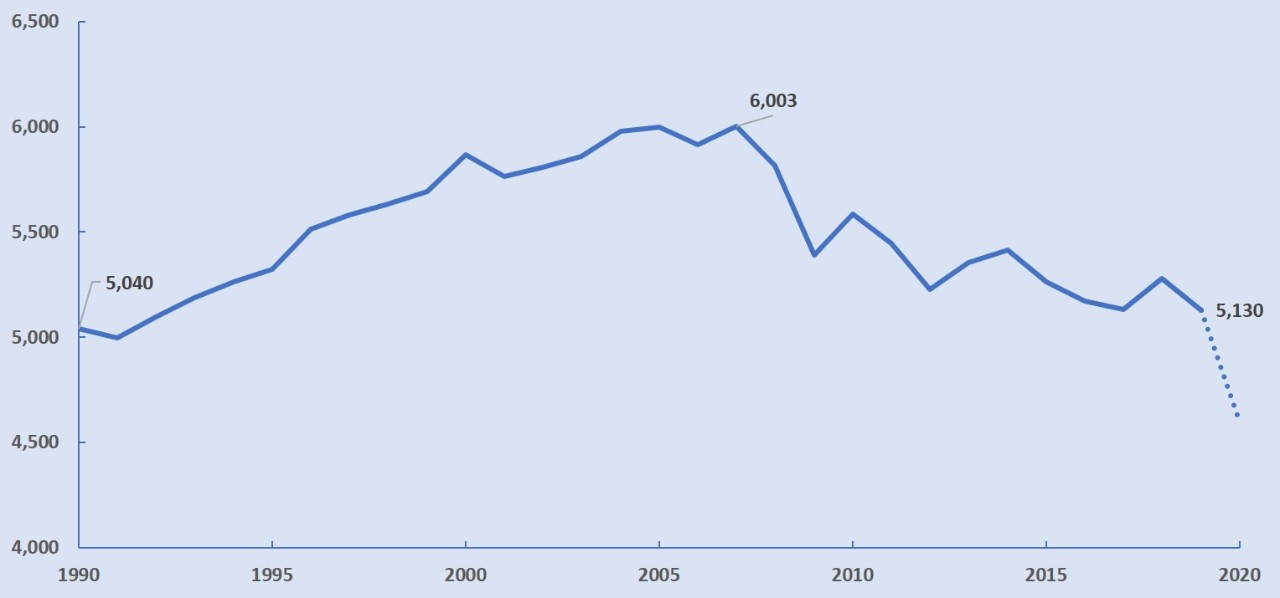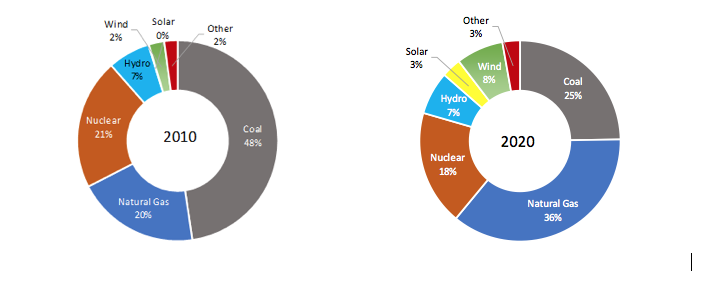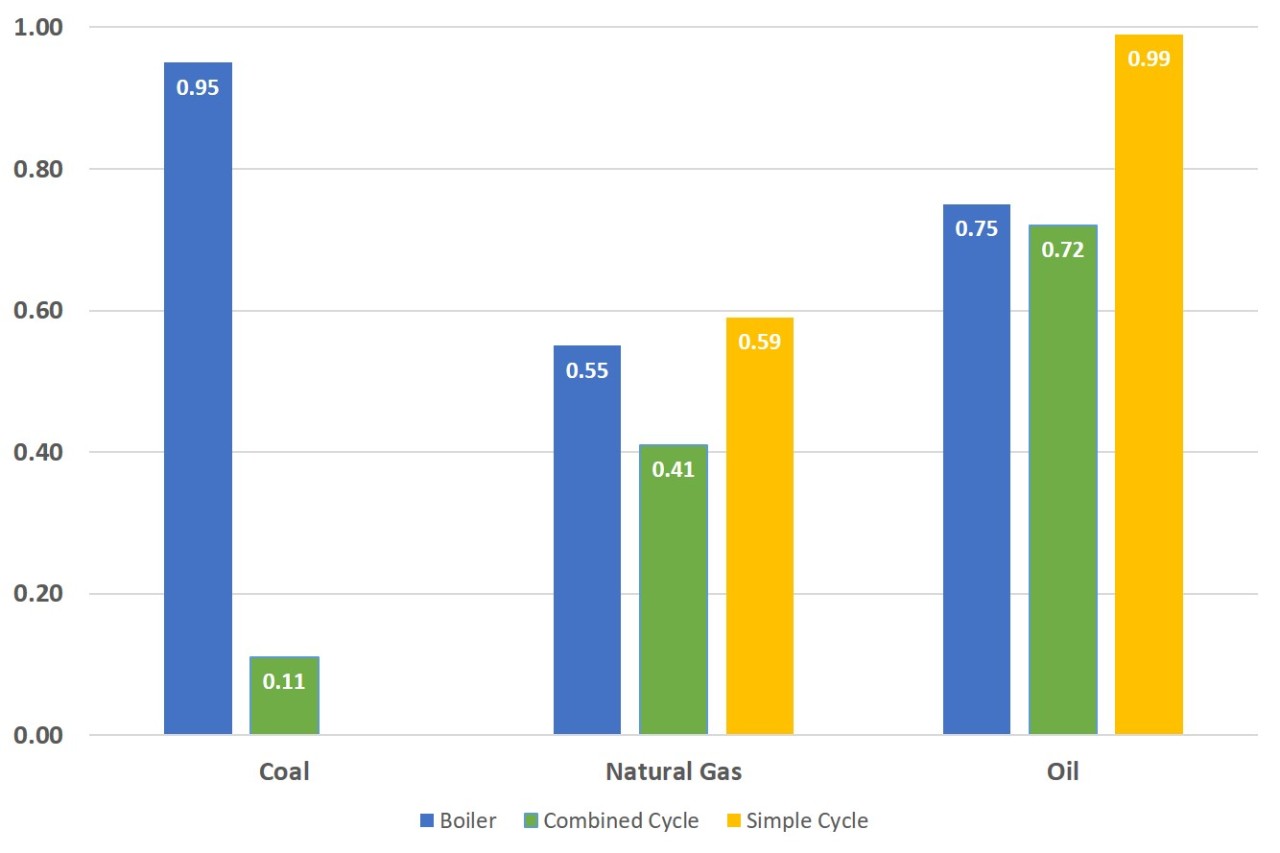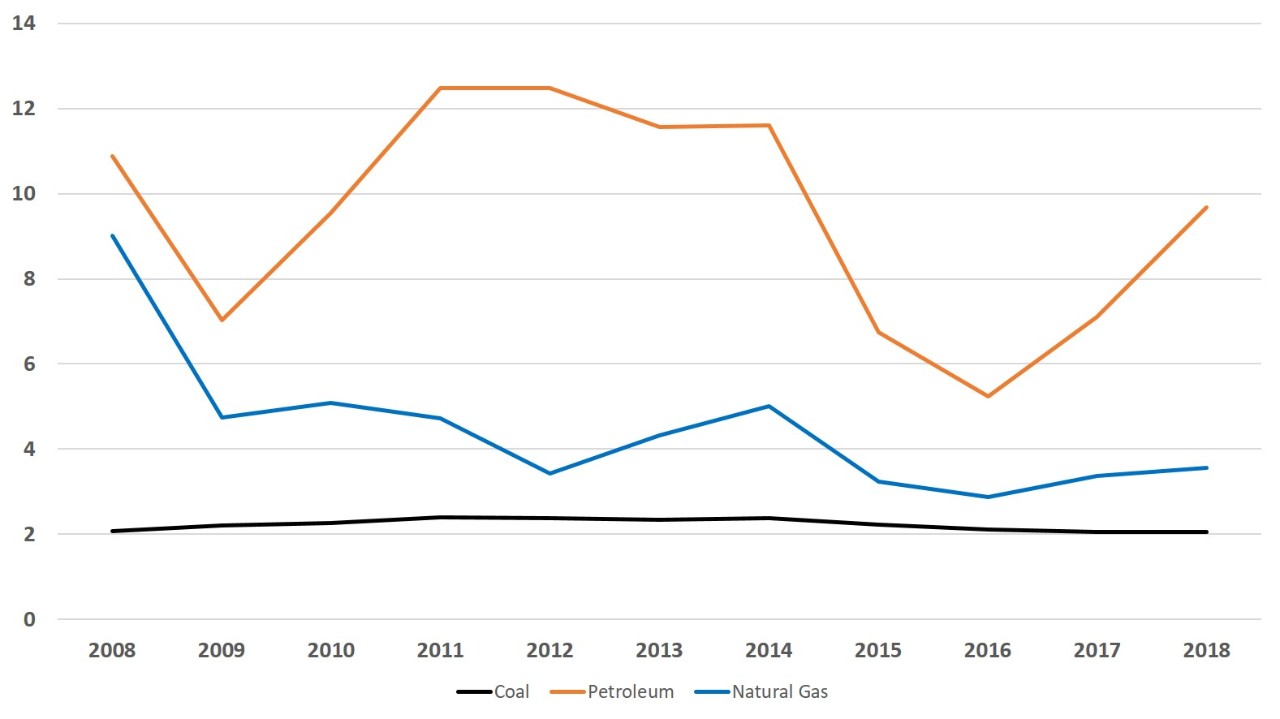CO2 Emissions in the US are Going Down. Blame Natural Gas
The US Energy Information Administration published its CO2 emission report on September 2020. This report shows that U.S. energy-related CO2 emissions decreased in 2019 by 2.8%, or 150 million metric tons when compared with 2018. In fact, the same publication shows that since 2007, energy-related CO2 emissions in the US have declined 8 out of 12 years for a cumulative decline of 14.5% or 873 million metric tons. Also, note CO2 emissions in 2019 are just 1.80% higher (90 million metric tons higher) than 1990.
For more blogs, success stories, and webinars in the Power Industry, visit website

Figure 1: US Energy Related CO2 Emissions
Data Source: eia.gov Chart by AVEVA
What explains this decline?
Short term factors influencing CO2 emissions include weather, fuel prices, and disruptions in electricity generation. Some of the long-term factors are:
- Economic trends (GDP, population, manufacturing profiles)
- Incentives to encourage renewable energy adoption (build and production taxes)
- Demand-side efficiency gains (more efficient vehicles and appliances)
- New technologies that reduce costs and improve efficiency
The EIA report does a good job of detailing the contributions of short and long-term factors in the decline of CO2 emissions. While they are many contributing factors, the CO2 emission decline in the US from the 2007 peak can be attributed to the switch to natural gas, and demand-side efficiency increases.
How does Natural Gas help lower CO2 Emissions in the US?
To answer this question, one needs to look at the changes in the fuel mix for electricity generation.

Figure 2: US Fuel Mix for Electricity Generation
Data Source: eia.gov. Chart by AVEVA
The two charts above show that natural gas is increasingly displacing coal as the primary fuel to generate electricity in the United States. Solar and wind are also displacing coal, while nuclear and traditional hydro are approximately the same.
It is true that burning natural gas produces CO2 emissions because it contains carbon as coal does. However, due to its chemical composition (Fuel C-H ratio) natural gas inherently produces less CO2 than coal. Also, natural gas combined cycle plants are 40 to 50% more efficient than a typical coal fired plant.
As a result, as the chart below shows, a natural gas combined cycle plant produces 55% less CO2 to generate the same amount of electricity than a coal fired plant.
CO2 Per Fuel and Technology Type Short-Ton/MWH

Figure 3: Fuel CO2 Emissions
Data Source: Generation data from various plants. Chart by AVEVA
Natural Gas as a Transitional Fuel
The switch to natural gas in the United States has been made possible due to advances in fracking technology that have led to lower prices, and the retirement of older, less efficient, and higher CO2 emitter coal-fired plants. Therefore, natural gas has been labeled a Transitional Fuel, that would allow countries to meet their energy demands while renewable generation continues to advance.

Figure 4: Fuel Prices for Electric Generation (USA)
Data Source: EIA Electric Power Annual. Chart by AVEVA
Demand Side Efficiency Increases
We have all seen how electric appliances and motors have become more efficient in recent years. The economic benefits are apparent because we pay less to air condition our houses after the old unit gives out, and we need to replace it with a more efficient one. In larger-scale applications such as hospitals, schools, or office buildings an energy efficiency study may lead to the installations of roof solar panels, newer and more efficient pumps, or air conditioning units, for example. All these incremental efficiencies lead to less electricity consumption, which leads to less fuel usage, and less environmental impact. In some cases, the efficiency gains could be as high as 35%, making a significant impact in sustainability and operational costs.
The COVID Effect
Note the above-cited reductions do not include COVID-19 effects, since the EIA report does not include 2020. EIA is predicting that the CO2 emissions for 2020 will be approximately 10% lower than in 2019. See the dotted line in figure 1 above. It has been reported that electricity generation from coal has continued to decrease as a percent of total generation in 2020, and the slowdown in economic activity due to the pandemic could be around 5% lower than 2019. As economic activity picks up, electricity demand and CO2 emissions will increase in 2021 from the 2020 lows.
How does AVEVA help with your sustainability goals?
In the power industry, AVEVA has the most advanced and innovative software tools to help in your journey to sustainability and operational excellence. From design and build to operate and maintain, AVEVA has a software solution to lower the carbon footprint of your power plant. Please visit our website to learn how your power industry peers use our digital solution.
In the Building and Facility Management segment, our System of Systems platform optimizes outcomes by combining people, assets, processes, and technology. Please visit our website and see how building management clients can lower energy consumption by up to 35%, reducing environmental impact and lowering operational costs.
Related Blog Posts
Stay in the know: Keep up to date on the latest happenings around the industry